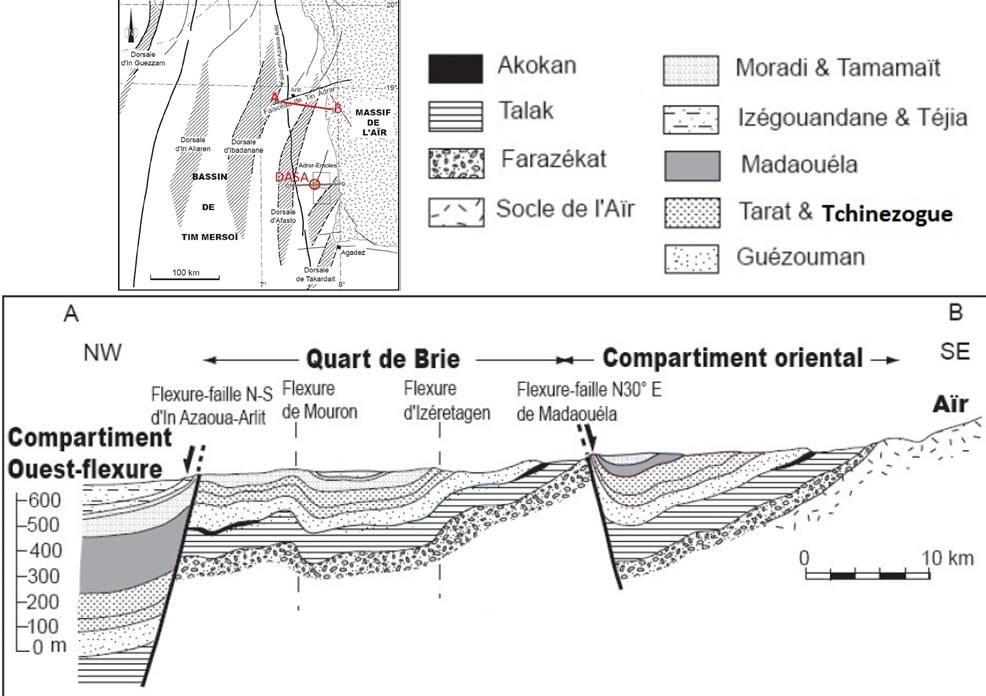Madaouela Fm
Type Locality and Naming
Group/Subgroup: Upper Tagora Gr
References: Claret & Tempère, 1968; Abdoul Aziz, 1968; Fabre et al., 1983; Broutin et al., 1990; Coquel et al., 1995; Fabre, 2005; Billon et al. 2016; CSA Global, 2017, 2019; Alfidja et al., 2021.
Synonym: Madaouella; Madaougla; Madawela; former upper Member of the Tarat Fm. “Argilo-gréseux de Madaouela”.
Lithology and Thickness
Argillites with intercalations of fine calcareous sandstones, coarse micro-conglomeratic sandstones and siltstones. Uranium mineralization is associated with sandstones. The formation does not outcrop, at least not obviously, and can be confused when the arkoses of the Izégouande Fm cover it unconformably. Can be thicker than 350 m thick.
Relationships and Distribution
Lower contact
In discordance with the underlying Tarat Fm.
Upper contact
The top can be reddish under the overlying Arlit Fm.
GeoJSON
Fossils
Rich in plant fragments. Yielded Lepidodendrons, brachiopods and polypiers.
Age
Depositional setting
Fluvial sandstone. The whole unit is Estuarine, Fluvial to marine.
Additional Information
